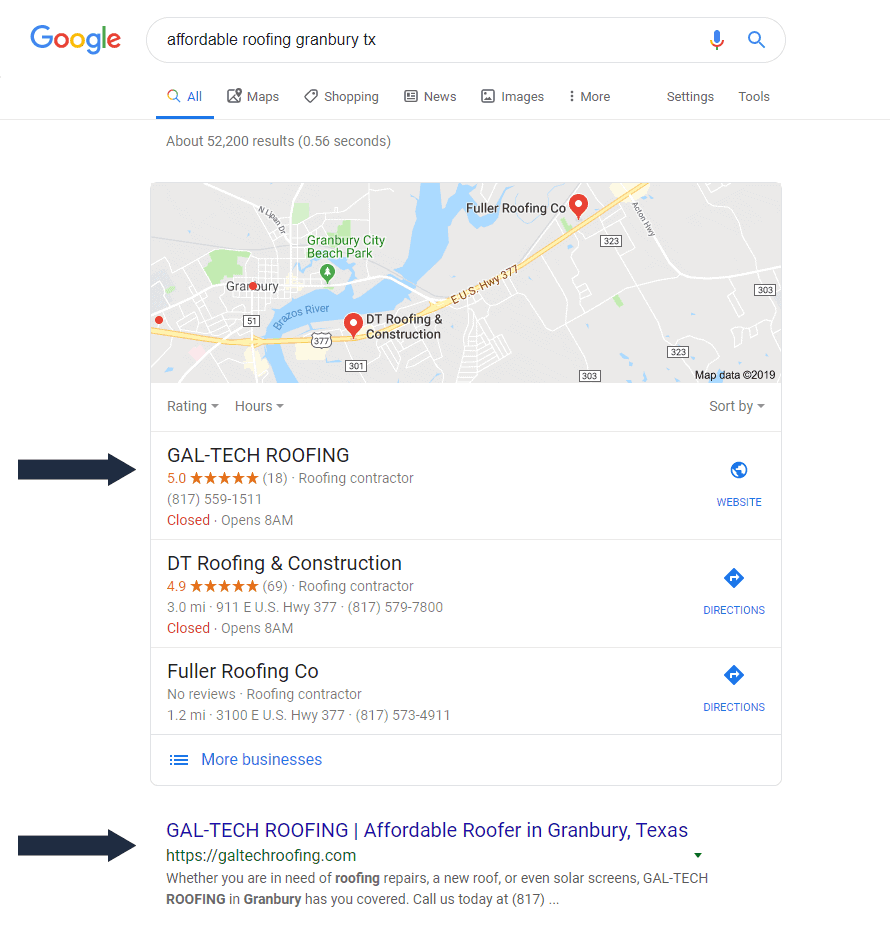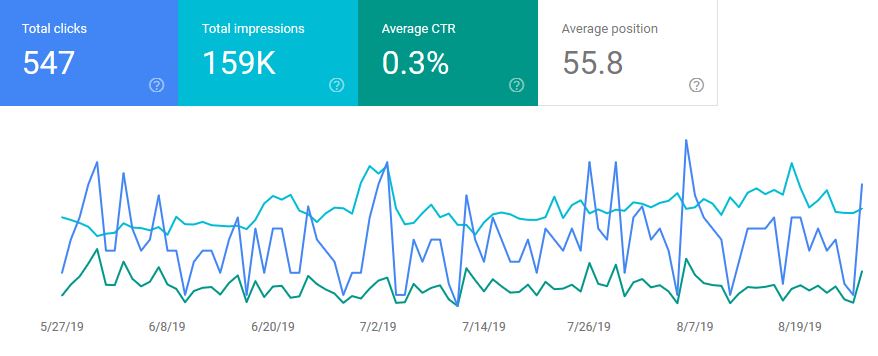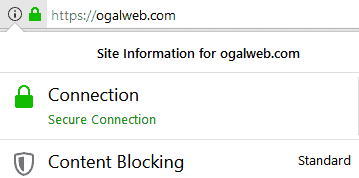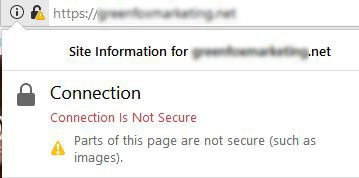Every industry is guilty of using jargon their customers don’t really understand, but the digital marketing industry might be the worst offender.
Acronyms are one of the most common ways businesses confuse their customers. Using shorthand and abbreviations is great for “shop talk” but anytime you send a confusing message to your customer you run the risk of alienating them.
While I try to do my best at avoiding jargon-laden acronyms, I’m just one person. The chance that you’ll run across these terms is pretty certain. Instead of feeling confused or frustrated, I want to help with the easy-to-understand definitions.
After reading this article, you’ll be able to confidently cut through the digital marketing acronym landscape.
Let’s get started!
Terms We’ll Be Covering
What is SEO?
SEO is an acronym for Search Engine Optimization. It’s one of the more common terms you’re likely to hear, but even once you realize what each letter stands for, it doesn’t make its definition clear.
The first thing to understand about SEO is its purpose. The goal of performing SEO is to have a website listed higher in the search results (most commonly in Google).
For good reason too. A study produced by SEO powerhouse Backlinko recently studied over 5 million websites and analyzed how often people visit a site as determined by its position in search results rankings (otherwise known as CTR, which we’ll get to in a minute).
The study concluded a lot of interesting data, some of which gets very technical, that reinforces the connection between organic website traffic and the position in which it’s ranked.
For example, the #1 ranked site for a search term will get around 32% of the clicks —10 times more than the sites ranked at the bottom of the page.

Now that you understand how important is to be in the top spot, the purpose of SEO is clear… but that still doesn’t tell you what it is.
The “what” could fill a library with answers, but for the purposes of this article, we’ll keep it simple.
Search engines like Google take into consideration hundreds of factors when making their decision on where to rank a website for any given term. Search Engine Optimization is the process of considering these factors and implementing techniques that will help give Google confidence in a website and rank it higher.
There’s no “on” or “off” switch for SEO, instead think of it as a spectrum. There are degrees to which any website is optimized for search engines, and there are always things that can be done to help improve a website’s optimization as an ongoing strategy.
What is PPC?
PPC is an acronym for Pay Per Click, a form of paid advertising. This advertising model works on the basis of showing users and advertisement, but only charging the advertiser when the ad is clicked or interacted with in some way.
One of the most popular forms of PPC advertising is Google Ads (also known as Google AdWords) which allows advertisers to bid on ad placements. Google has the biggest reach this this industry, so they set the standard for how it’s done.

Companies like this model because they know they are only paying for real traffic, not just “eyeballs” on their ad (like TV commercials). It’s also advantageous for extreme optimization efforts because you are able to measure and analyze all the data.
While paying for a click sounds simple, the PPC industry can be extremely complicated and isn’t for the casual user. Understanding what keywords to target, where to send clicks, and how to eventually turn those clicks into dollars is an industry unto itself.
PPC can be effective for just about any business that wants traffic to their website, but that doesn’t mean that every PPC campaign is successful. It’s easier to lose money than to make it if you aren’t certain of what you are doing.
What is a CTA?
CTA is an acronym for Call to Action. Simply put a CTA is a directive you give visitors to take a specific action on your website— most commonly the action you (as the website owner) want them to take.
This often comes in the form of a button or a text link that takes users to another part of your website.
Calls to action are vital for many reasons, but most importantly it helps website owners guide their visitors to a desired destination. Example of this could be to fill in a contact form, sign up, register, or request a quote or more information.

Like anything in the digital marketing world CTA’s can be analyzed and optimized on an ongoing basis using data collected from the behaviors of your website visitors.
There are many factors to consider and test when implementing a call to action on your website. Things like the words used, the color, the placement, and emphasis all play a role in making an effective CTA that is both noticed and used.
If you don’t want to get too deep in the subject, here are a few general rules for effective calls to action:
- Only use one CTA per page
- Use a contrasting color from the other content on the page
- Make it the most obvious choice for users
- Use actionable language
A good way to compare a website call to action to a real world example is to look at them like directional signs on the streets. “Turn Here”, “One Way”, “Stop”, “Yield”, all of these street signs give you clear direction on what to do next— similarly your website’s call to actions should serve the same purpose.
What is CTR?
CTR is an acronym for Click-through rate. It’s purpose is to measure how often a link (and most commonly an ad or listing in a search result) is clicked compared to the amount of times it is viewed.
The simple formula for CTR is the number of clicks divided by the number of views (or impressions).

For example if your ad was shown to 100 people and clicked 5 times (5 divided by 10) your CTR would be 5% (or 0.05).
This metric is important when optimizing your listing or ad. You always want to strive for the highest possible CTR.
As we discussed in the SEO portion of this article, your rankings can affect your CTR. The higher you are on search results the more likely you are to be visited—thus improving your click-through rate.
But to make things more complicated, your rankings in search engines is also partially determined by your CTR. It’s a bit of a “chicken or the egg” dilemma.
It’s important whether you are working on SEO or PPC to understand your CTR (Whew! Look at all those acronyms!) so you can begin to benchmark your efforts and measure how changes you make to your website or ad affect your traffic.
What is CRO?
CRO is an acronym for Conversion Rate Optimization. While the focus of this is on the “optimization” part, there are a few things to understand first.
Let’s break it down into each of the three words so we can understand what they all mean together, in context.
Conversion
A “conversion” is the word digital marketers use when a visitor or prospect turns into (or “converts”) into a customer. This could be when a visitor signs up for a service, or buys a product from your store. It can even be used when someone makes an inquiry with you.
Conversion Rate
Similarly to CTR (click-through rate) you can measure the rate at which prospects turn into customers. The formula for this is the same: customers divided by visitors.
As an example, if you had 50 people visit your product page, and 5 of them made a purchase, your conversion rate would be 10% (or 0.1).
Conversion rate optimization
Now that you understand a conversion, and how to calculate it’s rate, here’s where this acronym comes into play.
Similarly to search engine optimization (SEO) you want to continuously find ways to improve your CRO. Depending on the price of your product or service, and the volume of what you typically sell, increasing your conversion rate (even in very small amounts) can have big effects on your bottom line.
Let’s look at an example:
Let’s say you have a $50 product, and in a typical month you have 1,000 visitors to your product page and you sell 100 of them. Your conversion rate is sitting at 10%, and you are bringing in $5,000 in revenue.
If you were able to increase your conversion rate by 3% (from 10 to 13 percent), you would increase your revenue by 30% (from $5,000 to $6,500) without ever having to increase the number of visitors.
Seeing how these numbers work, even in a very simple form like this, show you how important it is to understand your conversion rate and optimize it as best as possible.
What is HTTP and HTTPS?
HTTP is an acronym for Hypertext Transfer Protocol, and if it has an “S” stands for secure. Unlike some of the other topics we discussed, this one is about as boring as it gets.
Other than the S, most of this will never matter to you as a business owner or website owner.
HTTP is the “language” used to display text, images, graphics, and more across the internet. There’s not much more you really need to know.
You’ve probably noticed that website addresses, or URLs, start with “http” or “https”.
The “S”, is important for you right now. While you might have not paid attention to if a site is http or https, you’ve probably noticed a green padlock next to the url, which shows up on https websites.
EVERY website today should have the green padlock on https— there’s no excuse!



In order to get the S added to your HTTP, you need a security certificate. While the levels of certificates can vary, the basic functionality of the security certificate is to encrypt any data submitted through your site, making it harder for hackers to easily access that data.
This could be simple things like the name and email address of someone filling in a contact form, or more sensitive items like personal information or credit card numbers.
Any website today NEEDS to have a security certificate. Not only is this important for the visitors on your website (so that you are not unknowingly giving away their information), Google has prioritized this to make it a factor in how it ranks your sites— sites with https will get priority to those without it.
What is UX?
UX is an acronym (kind of) for User Experience. UX can exist not only in the digital world, but the real world too.
Hate those awful clam shell packages? You know, the hard plastic ones that you can’t cut, rip, or chainsaw open?

That’s an example of poor user experience. No one likes those packages!
The same thing goes for people’s experience on your website. When things are hard to find, unorganized, or even possibly unpleasing to look at (aka “ugly), it can result in customer’s having a bad experience.
There are many factors that come into play when you consider the importance of UX in your website, but the most important thing you can do is to look at your page from the point of view of your customer and have empathy.
If your visitors come to your site for something specific (like to find your menu, or location) it’s important to make those items extremely easy to find.
A website shouldn’t be a complex puzzle that visitors have to “figure out”, it should be intuitive. The more intuitive a website is for your visitor, the better UX they will have.
What is UI?
UI is an acronym for User Interface. While most people typically refer to this as the “design” of a website, it’s more specific than that.
Design is a more broad term (that really means “planning”), where UI deals directly with the presentation and interactivity of your website.
This can include things like the layout, structure, functionality, color, typography, and much more.
If you’ve said “this website is pretty” or “this website is ugly” you were likely making that judgement based on the UI of the website.
Where this leads to confusion on the subject is our use of “design” when we should be saying “UI”.
When we use the blanket term “design a website”, that encompasses things like planning, research, strategy, content, and implementation. UI, however, just focuses the visual elements.
What did I miss?
While this list of 8 are some of the most popular acronyms in digital marketing, it’s far from a complete list.
Help me help you!
What acronyms or jargon do you find confusing?
Submit your question anonymously and I’ll add to the article!




